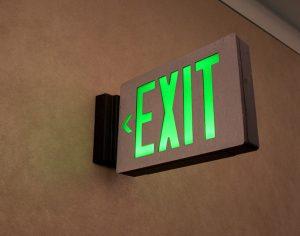From mapping radioactivity to helping farmers keep track of their crops, the startup sector has found numerous uses for drones over the last few years. And given that new enterprises and established companies alike are trialling unmanned deliveries, we better get used to drones whooshing about above us. But before budding business owners launch high-flying companies, they better familiarise themselves with British aviation laws because breaking them could have severe consequences. “You could be subject to investigations, fines and prison sentences,” says Jonathan Nicholson, assistant director of communications at the Civil Aviation Authority (CAA), the statutory corporation overseeing and regulating civil aviation in the UK. “If you’ve endangered an aircraft, you could ultimately go to prison for five years.” Additionally, there’s also a risk that insurance companies won’t pay up if you’ve caused an accident while flying unlawfully.
Given the risks attached to flying drones, it’s hardly surprising that the first thing any entrepreneur using drones in their business needs is training. “Commercial users – as in anyone knowingly making money out of their drones – need to be commercially approved,” says Nicholson. To acquire a license, operators must go through a course at one of the CAA-approved assessment organisations. Usually this means familiarising yourself with the law and having both your practical and theoretical knowledge tested. “But we do see some people who try to offer their services to companies without having gone through the course,” he says. “That is illegal and puts both parties at risk in terms of insurance and liability.”
And the training is important, as the Aviation Navigation Order, the legislation regulating all air traffic above these shores, isn’t always that easy to follow. “It’s written by lawyers and isn’t something the average person on the street would look at and understand,” says Nicholson. Recognising the need to clarify the legislation prompted the CAA to put together The Drone Code, an easy to follow guide for civilian drone pilots. And the document was sorely needed. “We saw a lot of incidents where pilots reported how drones came too close to their aircrafts,” says Nicholson. “We want people to fly safely but at the same time we don’t want the amazing things drones can do to be prevented just because some people fly badly.” Following the code will protect yourself, your business and others from serious harm.
Whether or not you’re flying an unmanned aerial vehicle (UAV) for recreational reasons or in an attempt to turn a profit, the drone must always be in your line of sight. While the CAA recommends that a drone is not further away than 400 feet from the pilot, this is not a hard and fast rule. “If you’re flying an absolutely huge drone you can obviously see it from further away than if you are flying a tiny one,” says Nicholson. “And it also depends on things like the weather and how good your eyesight is.” That being said, it’s not enough to simply see the UAV. “It’s no good to say ‘I think that speck in the distance is my drone,’” he says. “You have to be close enough to have depth and height perception so you can avoid other things that may appear in the air.”
The rule that the pilot must always see the aircraft is also the main obstacle to overcome for companies looking to launch full-scale aerial deliveries. “At the moment there is nothing approved that enables drones to see everything around them and automatically avoid them,” says Nicholson. So while companies like Amazon and Domino’s Pizza are experimenting with using the tech, these trials are heavily regulated and depend on the corporations’ ability to prove that they can conduct them without risking the safety of others. In other words, people won’t be able to order New Yorker pizzas or smart speakers any time soon. “The solutions are being developed and are probably not a million miles away but nothing has been approved just yet,” Nicholson says.
However, keeping a clear line of sight between yourself and the drone isn’t the only rule entrepreneurs must be aware of. The law also explicitly points out that no drone is allowed to drop an animal or anything else, not even if it is attached to a parachute. Asked whether or not there are a lot of unmanned vehicles making it rain cats and dogs, Nicholson laughs and replies in the negative. “You’re not allowed to drop anything,” he says. “It’s purely a safety thing.”
Finally, there are areas that drone pilots should avoid unless they have special permission. “Some areas of airspace are shut down to even the smallest drones,” says Nicholson. For starters, drones aren’t allowed to fly closer than 50 metres to crowds or 150 metres to individual people and properties. And you must also steer clear of places like prisons, nuclear sites and airfields unless you’ve got special permission from the owner of the establishment. The UK is hardly the only country to take this seriously: three people were arrested back in 2014 for having flown their drones over a French nuclear power plan.
Given the severe sanctions unlawful activities can incur, familiarising oneself with the law should be the first step before launching a drone company if you want its profits to soar. ![]()
Share via:


















































